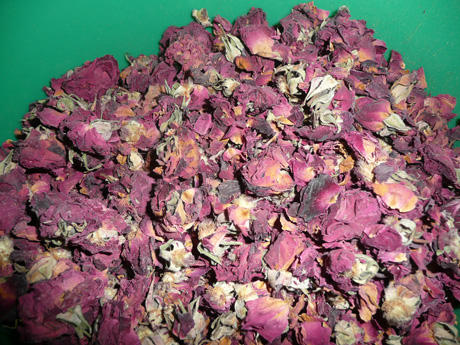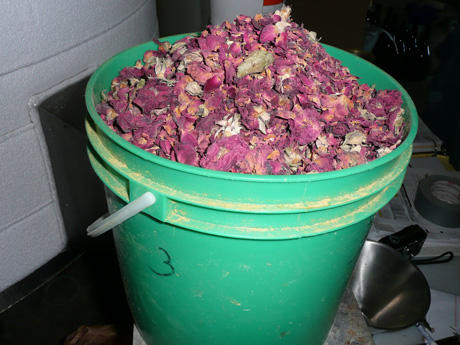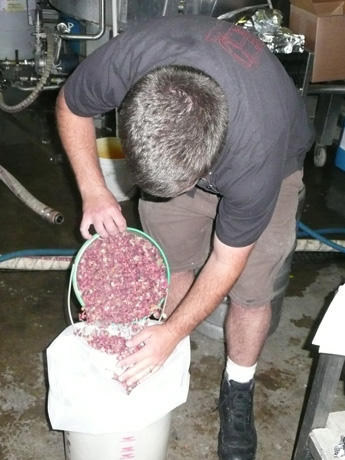| April 11, 2008 |
How Agostino’s La Fleurette came about is a romantic tale. Seven years ago, he met a girl and fell in love. Awash with the emotions of new love, he set out to create something that would be “a celebration beer of personal happiness.” So he started experimenting and after a year of trial and error was satisfied with the beer and released it commercially as La Fleurette. To the kettle he adds turbinado raw sugar and orange blossom honey, but he also adds black pepper because, as Aostino puts it, “love is also spicy.” At the end of the boil he dry hops, or rather dry-flowers, the beer with both roses and violets. After that, elderberry concentrate is added, which is more for color than flavor.

Agostino adding 75 pounds of turbinado sugar.
Not much hops are used, and the first addition is only four and half ounces of Chinook.

Which Travis adds fifteen minutes into the boil.

Then they prepared the flowers, beginning with the violets.

Which came from somewhere in central Europe, probably Poland.

A close-up of the violets.

About this many were used.

Next came the roses, which were grown in Pakistan.

Travis weighs the roses.

Which were very aromatic.

A close-up of the roses.

About this many were used.

After weighing the flowers, they were put into a mesh bag. First the roses.

Then the violets, along with some weights.

Happily the second hop edition involved more hops, for a final result of almost 21 IBUs.

Travis adds the first bucket, more Chinook hops.

Then Agostino adds the second bucket, which were Styrian Goldings.
Back to Part 1 | Continue on to Part 3
